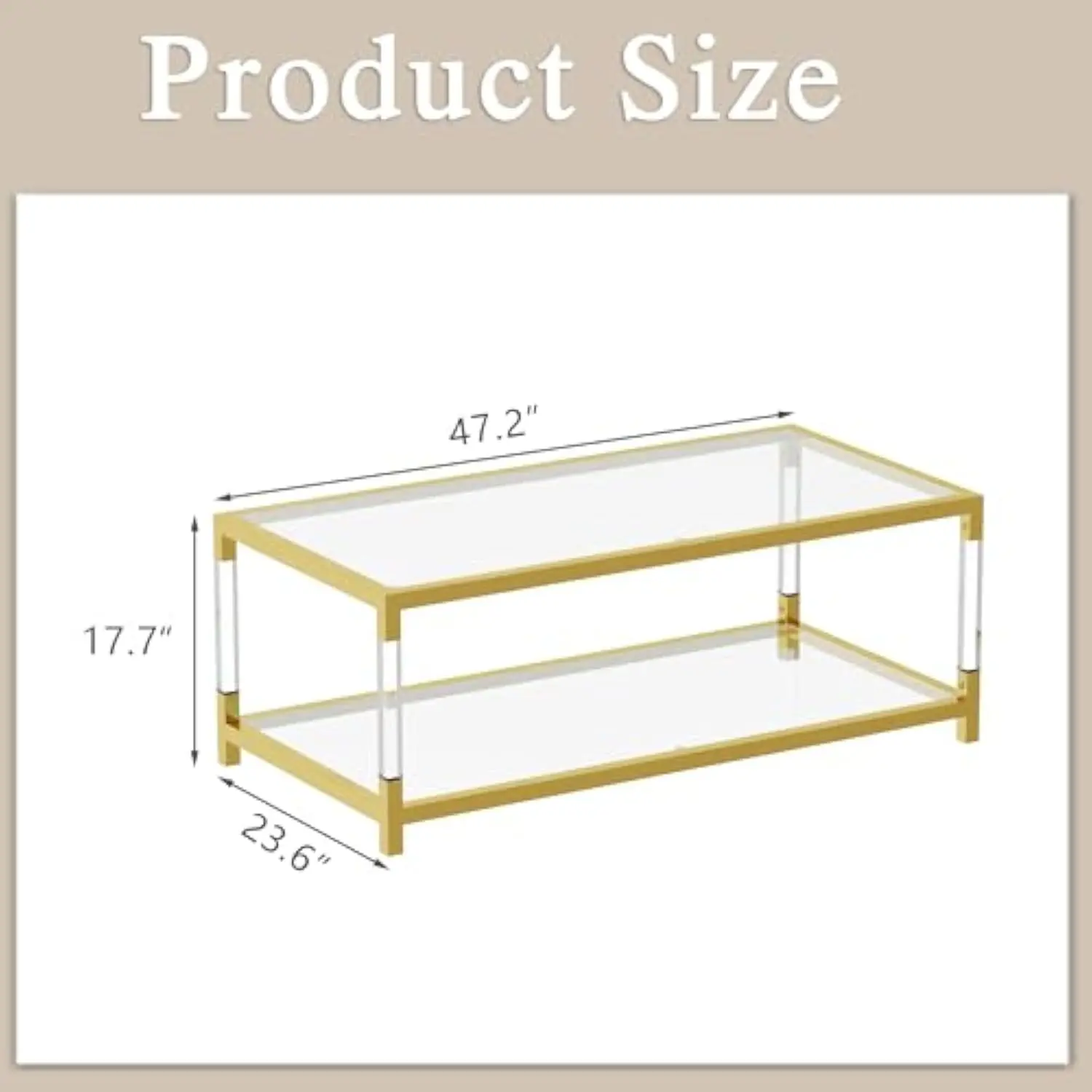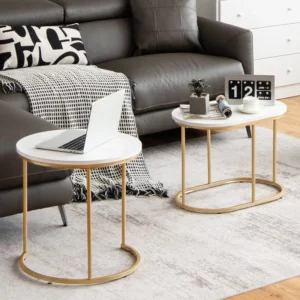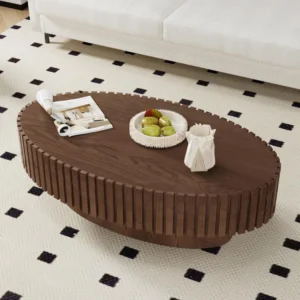Introduction: Balancing Style and Safety with Glass Coffee Tables
Glass coffee tables bring undeniable elegance to living spaces. Their transparent surfaces reflect light beautifully, creating visual spaciousness that can make even small rooms feel more open and airy. However, this aesthetic appeal comes with important safety considerations that every homeowner should address.
Each year, thousands of emergency room visits result from furniture-related accidents, with glass table injuries ranking among the most severe. These incidents often involve deep lacerations or impact injuries that could have been prevented with proper safety measures.
This guide aims to help you enjoy the beauty of your glass coffee table while implementing practical safety solutions. Whether you have children, pets, elderly family members, or simply want peace of mind, the following information will equip you with actionable strategies to create a safer home environment without sacrificing style.
For those interested in maximizing both safety and style, exploring various glass top coffee table ideas can provide inspiration for secure yet beautiful design solutions.
Understanding the Risks: Common Hazards of Glass Coffee Tables
Breakage and Laceration Hazards
The primary concern with glass coffee tables is the potential for breakage resulting in sharp edges and fragments. When standard glass breaks, it can create large, knife-like shards capable of causing deep lacerations requiring medical attention.
Impact Injuries
Falls onto glass surfaces present serious risks, especially for children who might trip or fall while playing. The unyielding surface combined with body weight can result in significant bruising, concussions, or worse if the glass breaks during impact.
Entrapment Risks
Tables with moving parts or narrow gaps between components can create pinch points where fingers or limbs might become trapped, particularly for curious young children exploring furniture by touch.
Sharp Edges and Corners
Even unbroken glass tables can pose hazards through sharp corners and edges. These are particularly dangerous at both adult knee height and child head height, creating risk zones in different areas of the home.
Stability Issues
Poorly designed or improperly placed glass tables may wobble or tip over when bumped. This instability dramatically increases the likelihood of breakage and subsequent injury.
Thermal Shock
Sudden temperature changes—like placing a hot mug directly on a cold glass surface—can cause thermal shock that weakens or cracks the glass over time, eventually leading to unexpected breakage.
When considering safety factors, many homeowners find themselves evaluating glass vs wood coffee tables to determine which material best suits their household’s needs and safety requirements.
Know Your Glass: Understanding Different Types and Their Safety Profiles
Not all glass is created equal when it comes to safety. Understanding the different types available helps you make informed decisions about existing tables or future purchases.
Annealed Glass (Standard Glass)
This basic glass undergoes a slow cooling process during manufacturing. While inexpensive, annealed glass has significant safety drawbacks:
– Breaks into large, knife-like shards with extremely sharp edges
– Fractures easily upon impact
– Poses serious injury risk when broken
– Not recommended for coffee tables, especially in homes with children or pets
Tempered Glass
Through a specialized heating and rapid cooling process, tempered glass gains significant safety advantages:
– 4-5 times stronger than annealed glass
– Breaks into small, rounded pieces (often described as pebble-like) that reduce laceration risk
– Can usually be identified by etched marks in the corners
– Industry standard for modern glass furniture
Laminated Glass
This safety glass consists of two or more layers bonded together with a plastic interlayer:
– Holds fragments together when broken, preventing scattering
– Provides excellent safety in high-risk environments
– Offers additional soundproofing benefits
– More expensive but provides superior protection
Glass Thickness Considerations
| Glass Thickness | Recommended Use | Relative Durability |
|---|---|---|
| 6mm | Small accent tables | Minimal; not ideal for daily use |
| 8-10mm | Standard coffee tables | Moderate; suitable for most homes |
| 12mm+ | Large or high-traffic tables | Excellent; highest resistance to impacts |
The thickness directly impacts durability—thicker glass withstands more pressure and is less likely to break under normal use conditions. For coffee tables, experts typically recommend at least 10mm thickness for adequate safety.
For beautiful options that prioritize safety features, browse our selection of mid-century modern glass top coffee tables that combine elegant design with secure construction.
Essential Childproofing Strategies for Glass Coffee Tables
Families with children require specialized approaches to glass table safety. These practical strategies can significantly reduce accident risk.
Corner and Edge Protection
• Silicone corner guards: Transparent options preserve table aesthetics while providing cushioning against impacts
• Edge protectors: U-shaped cushions that slide over glass edges, available in various colors and materials
• Installation tips: Clean glass surface thoroughly before applying; replace protectors showing signs of wear
Creating Safety Zones
• Arrange furniture to create natural barriers between play areas and glass tables
• Consider temporarily relocating glass coffee tables during specific developmental stages (crawling, early walking)
• Use play gates or room dividers in open floor plans to separate play spaces from furniture risk zones
Teaching Safety Awareness
• Use simple, consistent language to explain glass hazards to toddlers and young children
• Practice “walking feet” rules around furniture containing glass
• Praise careful behavior around glass surfaces to reinforce safety habits
Age-Specific Considerations
• For crawling babies: Consider floor-level hazards like table supports and lower shelves
• For toddlers: Focus on corner protection and stability against pulling/climbing attempts
• For school-age children: Establish clear rules about activities near glass surfaces
Selecting the right size table can also impact safety. Properly sized furniture reduces collision risks in tight spaces, which is why understanding coffee table sizes for small living rooms matters from both design and safety perspectives.
Making Your Existing Glass Coffee Table Safer: Practical Solutions
If replacing your glass table isn’t an option, these strategies can significantly improve its safety profile.
Complete Safety Inspection
- Identify your glass type (look for etched marks indicating tempered glass)
- Examine edges and corners for chips or cracks that weaken structural integrity
- Test stability by gently rocking the table to detect wobbles
- Check that all hardware is properly tightened
- Verify that the glass sits securely in its frame or supports
Enhance Stability
- Apply non-slip pads between the glass and its base to prevent sliding
- Ensure your table sits on a completely level surface
- Adjust leveling feet if your table includes them
- Consider furniture anchors for top-heavy or unstable designs
- Distribute decorative items evenly across the surface to maintain balance
Surface Protection Methods
- Apply protective film designed for glass furniture (similar to window security film)
- Use table runners or placemats to provide cushioning
- Consider glass top pads that protect against scratches and minor impacts
- For tables used for dining, use placemats and coasters consistently
Strategic Placement
- Position the table away from high-traffic walkways
- Maintain adequate clearance around all sides (minimum 18 inches)
- Keep away from play areas or doorways where running occurs
- Ensure good lighting around the table to improve visibility of edges
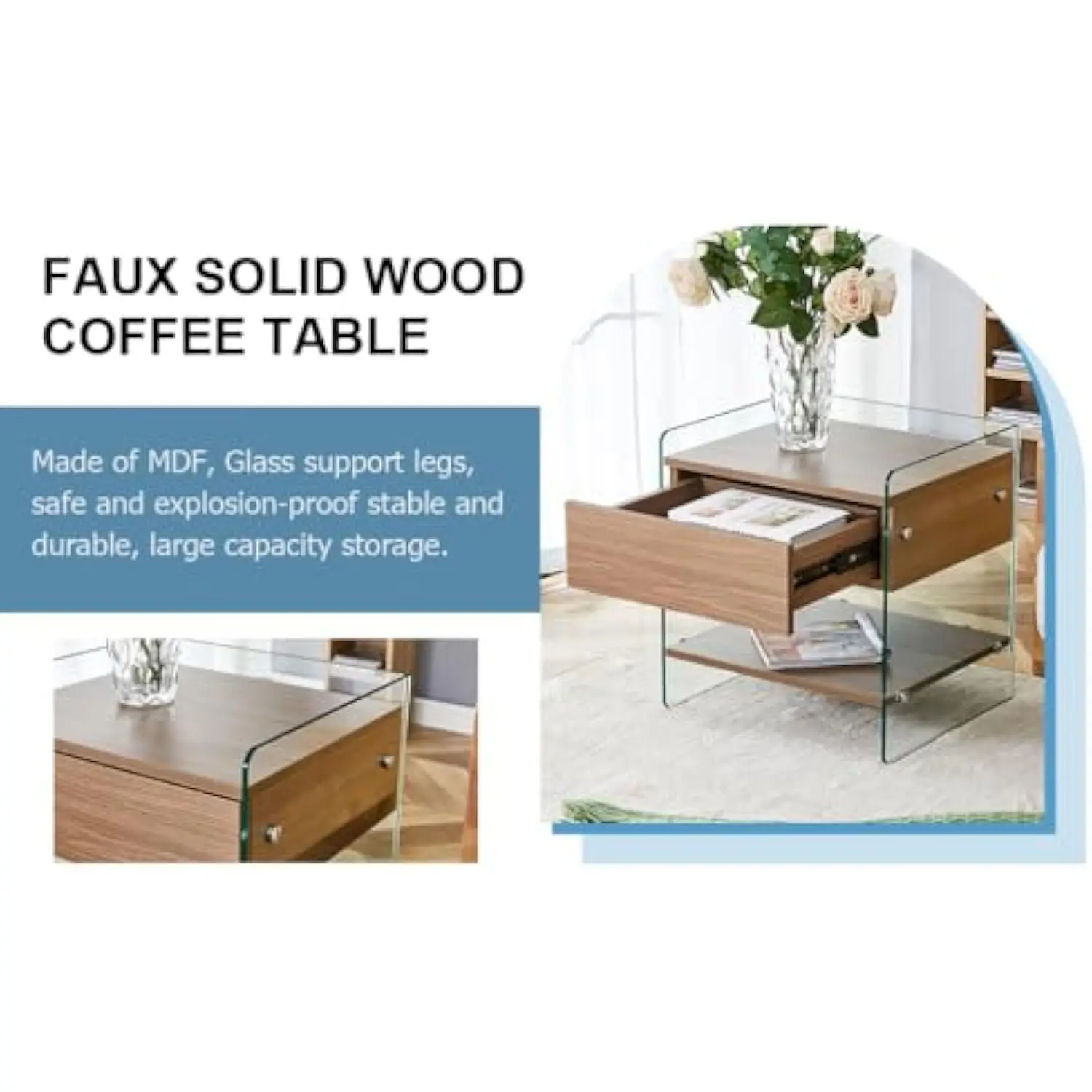
Finding the perfect balance between safety and aesthetics can be challenging. For inspiration, explore tips on mastering styling glass top coffee table designs that prioritize both protection and visual appeal.
Choosing a Safer Glass Coffee Table: What to Look For When Shopping
When purchasing a new glass coffee table, certain features and specifications can significantly reduce safety risks.
Safety Glass Certifications
• Look for tables with glass marked as “tempered” or “safety glass”
• Check for compliance with ANSI Z97.1 or similar standards
• Quality manufacturers will readily provide information about their glass specifications
• Certification marks are typically etched into the glass corners
Safety-Enhancing Design Features
• Rounded or beveled edges eliminate sharp corners
• Bordered frames that extend slightly above the glass surface provide edge protection
• Inset glass designs where the glass sits below the frame level offer natural protection
• Thicker glass (10mm or greater) provides better resistance to impacts
Base Design and Stability
• Wide-based designs distribute weight more effectively
• Lower center of gravity reduces tipping risk
• Multiple support points provide better stability than single pedestal designs
• Weight of the base should be proportional to the glass size
Material Combinations
• Tables combining glass with wood or metal frameworks often offer superior stability
• Fully framed designs protect edges better than frameless options
• Some tables feature rubber gaskets between glass and frame for cushioning
• Consider designs with minimal exposed glass for highest safety
Size Considerations
• Larger tables should have proportionally thicker glass and more substantial bases
• Height should be appropriate for your seating (standard coffee tables are 16-18 inches high)
• Allow adequate clearance around the table for safe movement
For particularly safe options, consider mid-century modern round coffee tables which eliminate dangerous corners while maintaining stylish appeal.
Proper Maintenance for Longevity and Safety
Regular maintenance not only preserves your table’s appearance but also prevents safety issues from developing.
Cleaning Best Practices
• Use ammonia-free glass cleaners specifically formulated for furniture
• Apply cleaner to a soft microfiber cloth, not directly to the glass
• Clean in a circular motion to avoid streaking
• Dust frames and supports weekly to prevent abrasive buildup
| Recommended Products | Products to Avoid |
|---|---|
| Ammonia-free glass cleaner | Abrasive powders |
| Microfiber cloths | Paper towels (can scratch) |
| Mild soap solution | Bleach-based cleaners |
| Specialized furniture polish for frames | Vinegar (may damage sealants) |
Regular Safety Checks
• Inspect edges monthly for chips or cracks
• Check stability by gently testing all legs for wobbling
• Examine hardware and tighten as needed
• Look for stress marks in the glass (rainbow-like patterns)
Preventive Measures
• Always use coasters under beverages
• Place trivets under hot items to prevent thermal stress
• Lift objects rather than sliding them across the surface
• Use felt pads on decorative items that contact the glass
Replacement Indicators
• Any crack, regardless of size (even hairline fractures compromise structural integrity)
• Chips larger than 1/4 inch along edges
• Stress marks appearing within the glass
• Significant wobbling that cannot be resolved by adjusting
Mid-Century Modern Solid Wood Coffee Tables, Mid-Century Modern Teak Coffee Tables
$879.95 Select options This product has multiple variants. The options may be chosen on the product pageMid-Century Modern Danish Coffee Tables, Mid-Century Modern Oval Coffee Tables, Mid-Century Modern Solid Wood Coffee Tables
$390.05 Select options This product has multiple variants. The options may be chosen on the product pageMid-Century Modern Glass Top Coffee Tables, Mid-Century Modern Glass Top Side & End Tables
$460.58 Select options This product has multiple variants. The options may be chosen on the product pageMid-Century Modern Glass Top Coffee Tables, Mid-Century Modern Vintage Coffee Tables, Mid-Century Modern Vintage Side & End Tables
$725.36 Select options This product has multiple variants. The options may be chosen on the product pageMid-Century Modern Nesting Coffee Tables, Mid-Century Modern Nesting Table Sets
$361.45 Select options This product has multiple variants. The options may be chosen on the product pageMid-Century Modern Oval Coffee Tables, Mid-Century Modern Solid Wood Coffee Tables
$679.56 Select options This product has multiple variants. The options may be chosen on the product page
For those concerned about ongoing maintenance challenges, mid-century modern solid wood coffee tables offer beautiful alternatives with fewer safety considerations and simpler care requirements.
Special Considerations for Homes with Pets
Pets introduce unique safety challenges for glass coffee table owners. Their unpredictable movements and behaviors require additional precautions.
Pet-Specific Risk Factors
• Jumping pets can impact glass surfaces with significant force
• Wagging tails may repeatedly hit table legs, affecting stability over time
• Claws can scratch glass, creating weak points that may lead to breakage
• Larger pets might view low tables as resting places, exceeding weight limitations
Training Strategies
• Use positive reinforcement to establish “no-jump” zones around glass furniture
• Create consistent boundaries with verbal cues when pets approach glass tables
• Provide alternative resting areas that fulfill similar needs (sunny spots, elevated perches)
• Use temporary deterrents like double-sided tape until boundaries are established
Physical Solutions
• Apply pet-friendly table covers that protect against scratches and impacts
• Position scratching posts or pet beds strategically to redirect activity
• Consider temporary acrylic covers during training periods
• Use pet gates to restrict access to rooms with glass furniture when unsupervised
Temporary Alternatives
• During high-energy puppy or kitten stages, consider temporarily storing glass tables
• Swap glass tops for wood inserts if your table design allows
• Create designated pet zones in other areas of the home with appropriate furniture
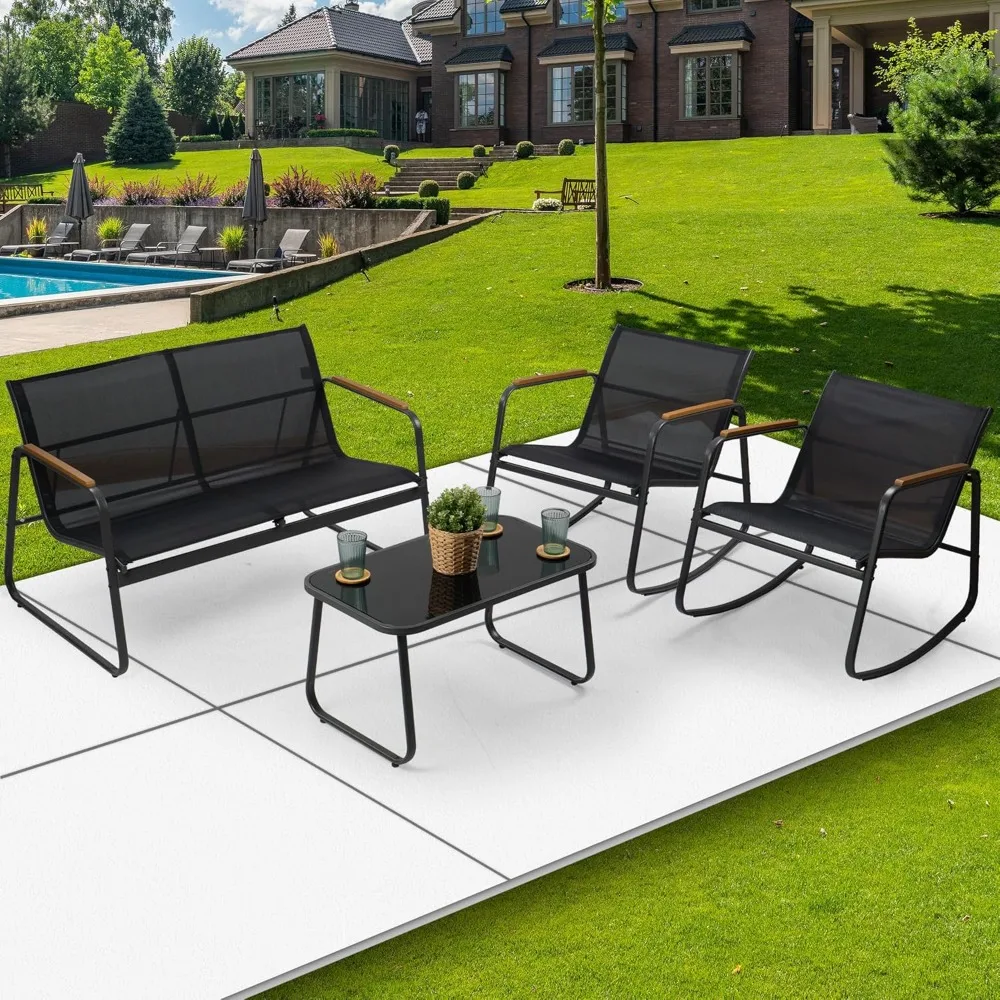
For homes with active pets, exploring space-saving coffee tables might provide options that reduce collision risks while maintaining functionality in your living space.
Emergency Preparedness: Handling Glass Table Accidents
Despite preventive measures, accidents can happen. Being prepared with the proper response can minimize injuries and complications.
First Aid for Glass Cuts
- Apply gentle pressure with clean cloth to control bleeding
- Rinse wound with clean water once bleeding slows
- Do not probe the wound looking for glass fragments
- Seek medical attention for:
– Deep cuts that may need stitches
– Cuts near joints or that affect movement
– Any cut where glass fragments may remain embedded
– Wounds showing signs of infection
Safe Glass Cleanup
- Keep children and pets away from the area
- Wear thick gloves, closed shoes, and eye protection
- Use a flashlight at an angle to locate small fragments
- Use a commercial vacuum with a HEPA filter for tiny particles
- Avoid using brooms which can scatter smaller pieces
Hidden Fragment Detection
• Shine a flashlight parallel to the floor to catch light reflection from tiny shards
• Use packing tape pressed against carpet or upholstery to lift embedded fragments
• Check a wide perimeter beyond the immediate breakage area
• Pay special attention to walkways where fragments might be tracked
Documentation Guidelines
• Photograph the damage for insurance purposes
• Note time, cause, and extent of breakage
• Keep receipts for cleanup supplies and medical treatment
• Record any injuries, however minor they seem initially
Understanding proper glass top mid-century coffee table layout tips can help you position furniture to minimize accident risk and create safer traffic patterns through your space.
Alternative Solutions: Beyond Traditional Glass Tables
If glass tables remain a concern despite safety measures, consider these alternatives that maintain style while reducing risks.
Glass-Like Alternatives
• Acrylic/plexiglass: Offers transparency with significantly higher impact resistance
• Tempered glass with applied safety film: Combines traditional appearance with added protection
• Glass-topped tables with protective covers: Preserve aesthetics while adding safety
Material Alternatives with Modern Appeal
• Clear-coated wood with high-gloss finish: Provides reflective quality similar to glass
• Polished stone: Offers luxury appearance with greater durability
• Metal surfaces: Contemporary option without breakage concerns
Comparison of Alternatives
| Material | Appearance | Safety Profile | Maintenance | Relative Cost |
|---|---|---|---|---|
| Tempered Glass | Transparent, reflective | Good when undamaged | Regular cleaning | Moderate |
| Acrylic | Transparent, slight blue tint | Excellent, won’t shatter | Scratch-prone | Moderate-High |
| Wood with glass insets | Warm with reflective elements | Very good, limited glass exposure | Dual maintenance | Moderate-High |
| Polished Stone | Elegant, natural patterns | Excellent, no breakage risk | Periodic sealing | High |
Transitional Solutions
• Removable table toppers for temporary protection during high-risk periods
• Nesting tables that can be arranged according to current safety needs
• Convertible designs that adapt as family needs change

For those seeking elegant alternatives without glass safety concerns, our collection of mid-century modern walnut coffee tables offers timeless appeal with enhanced durability.
Frequently Asked Questions About Glass Coffee Table Safety
How can I tell if my existing table has tempered glass?
Look for permanent etched marks in the corners of the glass. Tempered glass typically has stamps or etchings indicating compliance with safety standards. If you don’t see any markings, assume it’s regular annealed glass and take extra precautions.
Can I retrofit my annealed glass table with safety features?
Yes, you can apply safety film designed for glass furniture, which helps hold fragments together if breakage occurs. However, this doesn’t provide the same level of protection as tempered glass. Corner protectors and edge guards can also be added to any glass table.
Are glass coffee tables categorically unsafe for homes with children?
Not necessarily. Tempered glass tables with rounded edges, stable bases, and appropriate thickness can be relatively safe. The key is choosing tables specifically designed with safety features and implementing additional protective measures based on your child’s age and behavior.
What’s the difference between safety standards in different regions?
Safety standards vary by country but generally address glass thickness, breakage patterns, and impact resistance. North American standards (ANSI Z97.1) and European standards (EN 12150) both require tempered glass to break into small, relatively harmless pieces rather than sharp shards.
How long do edge protectors typically last?
Quality edge protectors typically last 2-3 years before the adhesive degrades or the material hardens. Factors affecting longevity include exposure to sunlight, cleaning chemicals, and physical contact. Inspect protectors regularly and replace when they show signs of peeling or hardening.
Can thermal stress cause spontaneous breakage?
Yes. Temperature differentials across the glass surface can create stress that eventually leads to breakage, even without direct impact. This is why using coasters under hot items and keeping tables away from heating vents or direct sunlight is important for long-term safety.
What’s the safest glass thickness for a standard coffee table?
For coffee tables, 10-12mm tempered glass provides an optimal balance of durability and safety for most household applications. Larger tables may require even thicker glass (12-15mm) to maintain structural integrity and resist flexing.
For versatile and safer options that adapt to changing needs, consider mid-century modern nesting coffee tables that can be arranged to minimize hazards while maintaining functionality.

